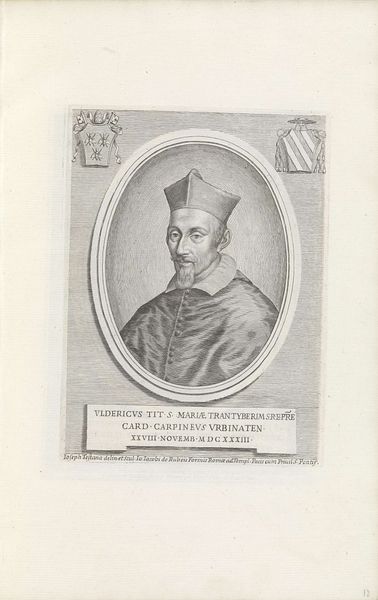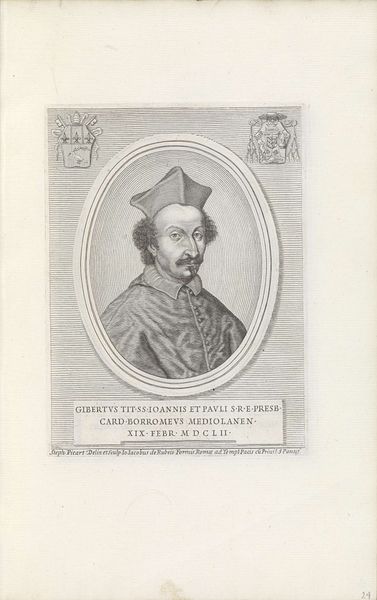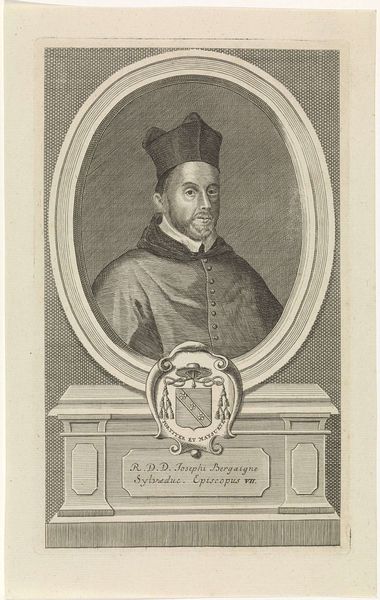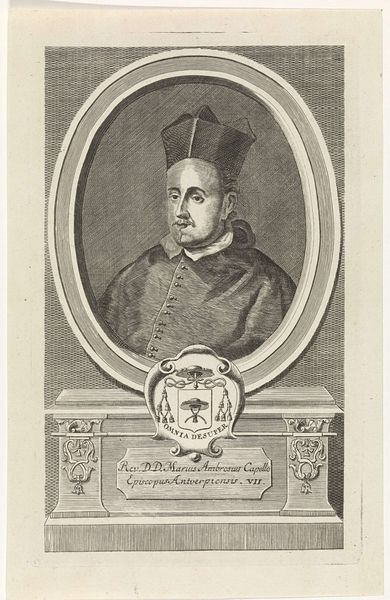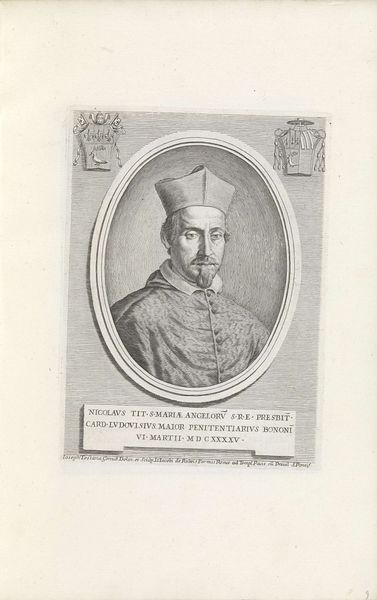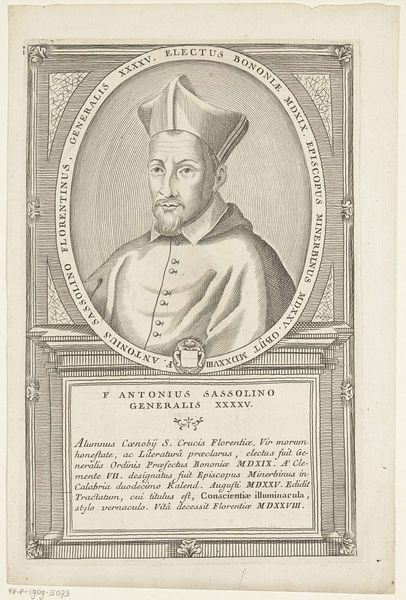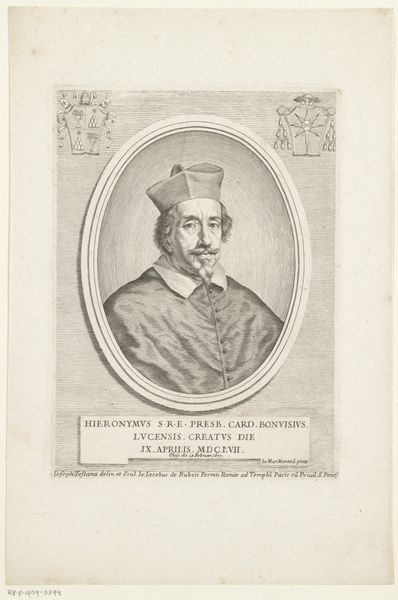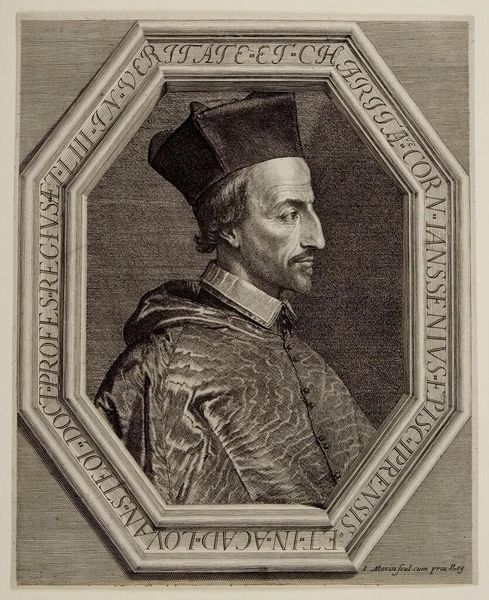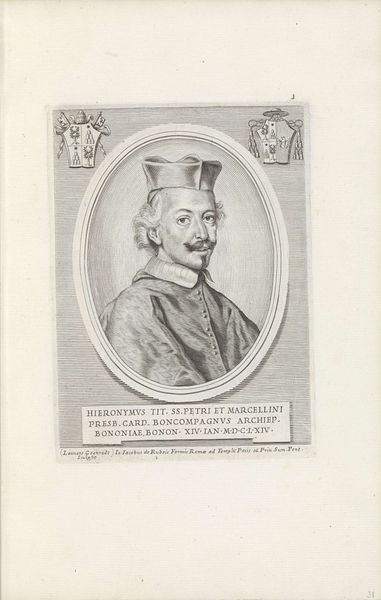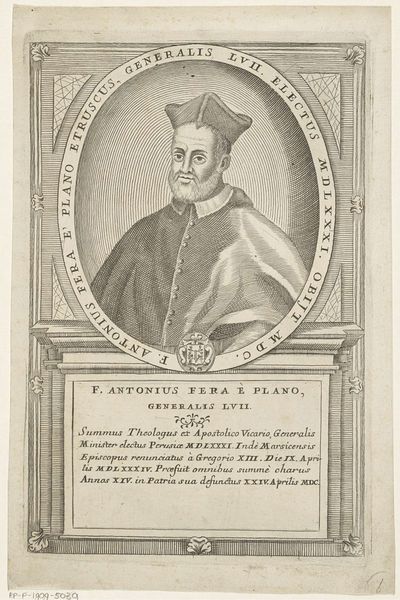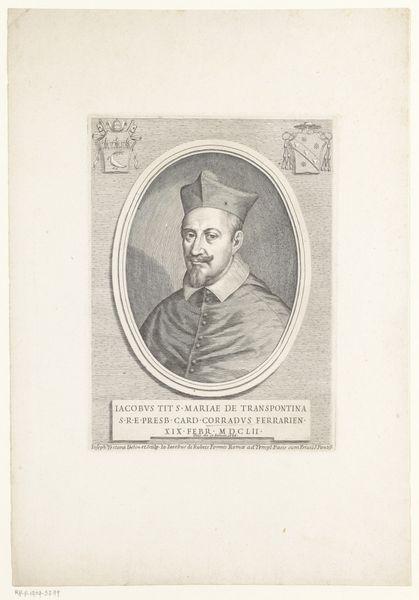
engraving
#
portrait
#
baroque
#
old engraving style
#
history-painting
#
engraving
Dimensions: height 194 mm, width 145 mm
Copyright: Rijks Museum: Open Domain
Albertus Clouwet created this portrait of Cardinal Gregorio Barbarigo using engraving, a printmaking technique that demands precision and skill. Look closely and you'll see how the image is formed by countless lines incised into a metal plate, likely copper. The engraver uses a tool called a burin to carve these lines, the depth of which determines how much ink they hold and therefore the darkness of the printed line. This process allows for incredibly fine detail, evident in the Cardinal’s facial features and the texture of his robes. Engraving was a crucial method for disseminating images and information in the early modern period. It allowed for the reproduction of artworks and portraits, making them accessible to a wider audience. The labor-intensive nature of engraving meant that prints were valuable commodities, reflecting a complex interplay of artistic skill, technological innovation, and commercial enterprise. Considering the material and the making, we can appreciate the craftsmanship and understand the social context in which this portrait was created and circulated.
Comments
No comments
Be the first to comment and join the conversation on the ultimate creative platform.
